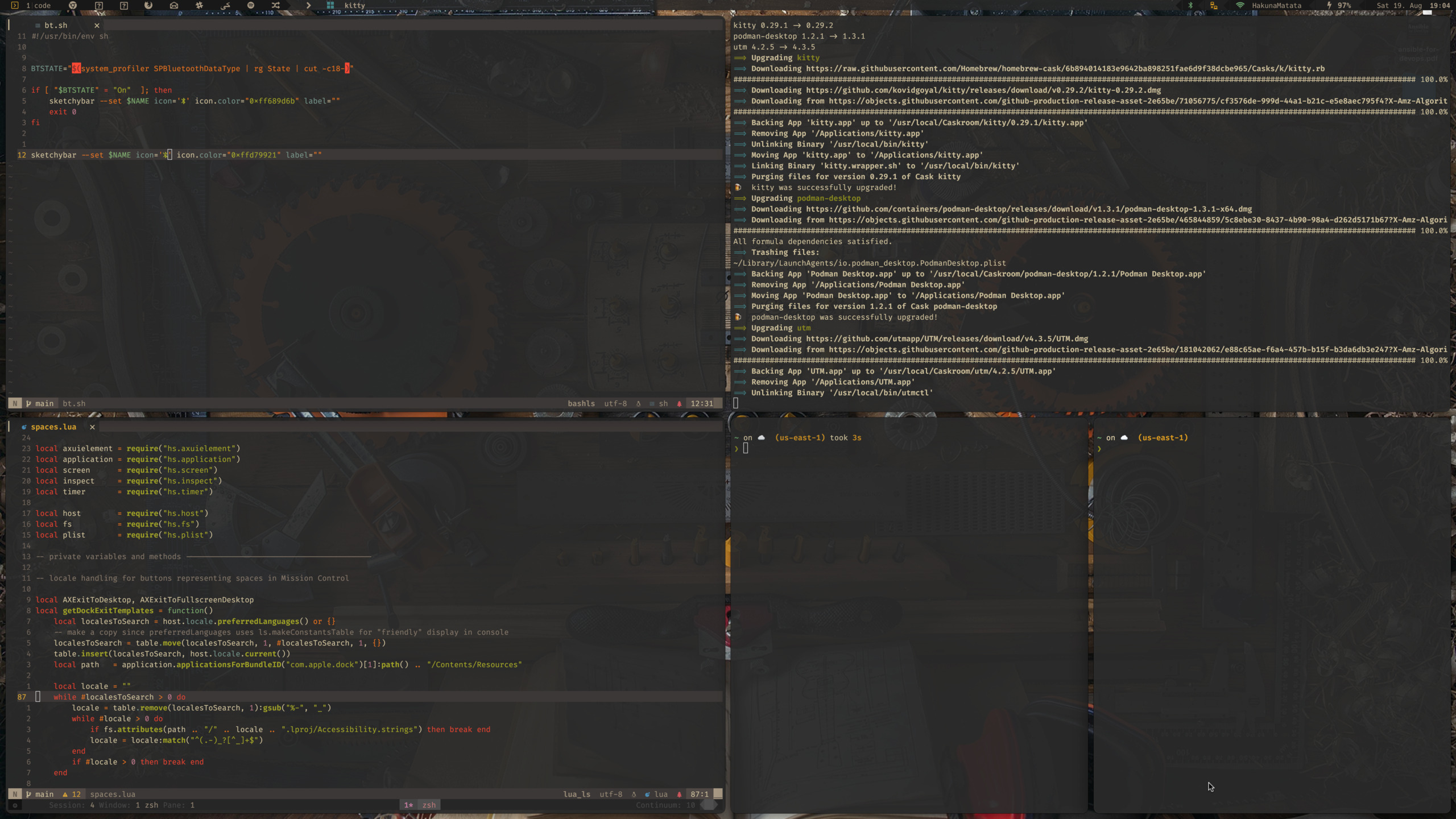Hello Everyone,
as you can see on my screenshot, i am using an intel based mac for years now, which i customized to my needs. However i have reached the limits of this machine in terms of customization options and would like to move to linux to test it out as a daily driver. I'm actually quite happy with mac from the pov that everything just works, however there are certain things that annoy me, but apple does not allow me to change them.
As a newbie in terms of desktop linux (i've used ubuntu roughly 12 years ago as a daily driver and am familar with headless linux), i'd like your advice.
Specifically I am looking for:
- a minimal, fast system
- keyboard / shortcut based - all interactions can be done from keyboard (within common sense limits)
- all keys can be custom mapped (i have muscle memory of my custom keys for certain actions, so i'd like to keep them)
- all can be configured from dotfiles (worse case shell scripts and ansible)
- very low ressource consumption, snappy system with no delays.
I'd like to try NixOs due to it's unique configuration ability, however on a headless server it was a buggy pain just weeks ago (for example user passwords just vanished/changed without any external influence, not allowing access anymore), so i'm open to alternatives.
What i am looking for in advice is:
- a minimal, configurable (file based for git) tiling window manager
- a top status bar like you see in the screenshot that i can freely configure
- as much terminal emulator based as possible (i honestly mostly only need a browser and the terminal, most other apps have a TUI that i can use with the keyboard, see the above requirement)
- terminal based package management as easy as brew (maybe Nix?)
- custom keyboard layout (I am not a native english speaker, so i mapped all non-english characters to my option keys with the english layout as the base)
- Option to use 2 keyboards at once (come by default when using Karabiner Elements) as i combined 2 small keyboards to one to a fake split keyboard ;)
My current stack on macos is Hammerspoon for heavy customization, Karabiner Elements, yabai, kitty (and alacritty, for ssh, as kitty is bad with ssh in my personal experience), sketchybar. firefox (customized for privacy)
Any good recommendations or dotfiles? Anything i should look out for as a MacOs User?
Thanks in advance!
